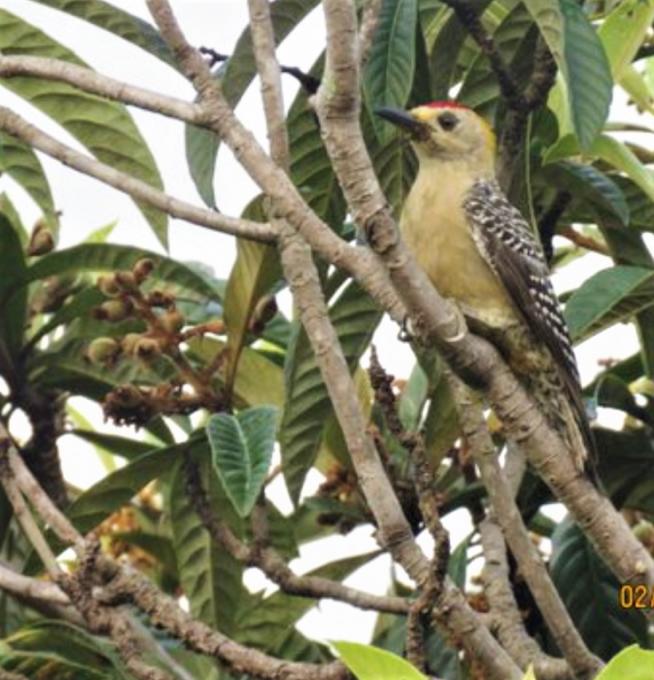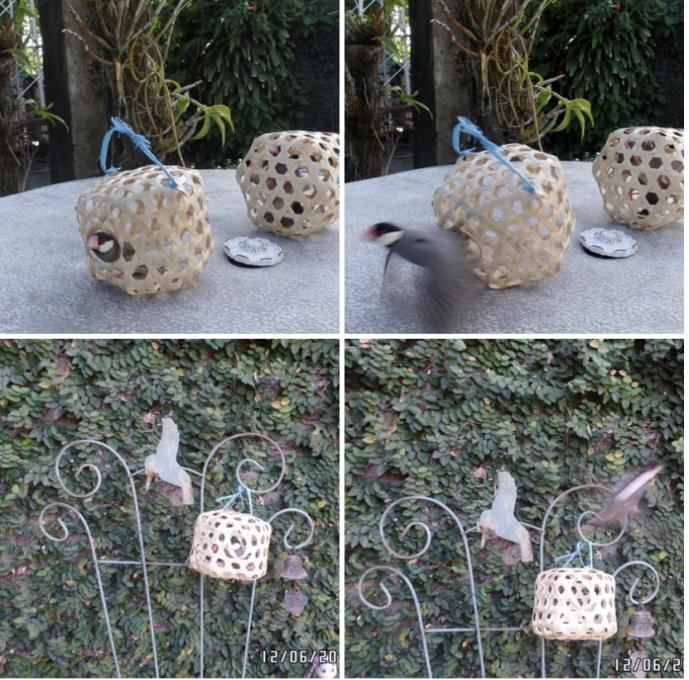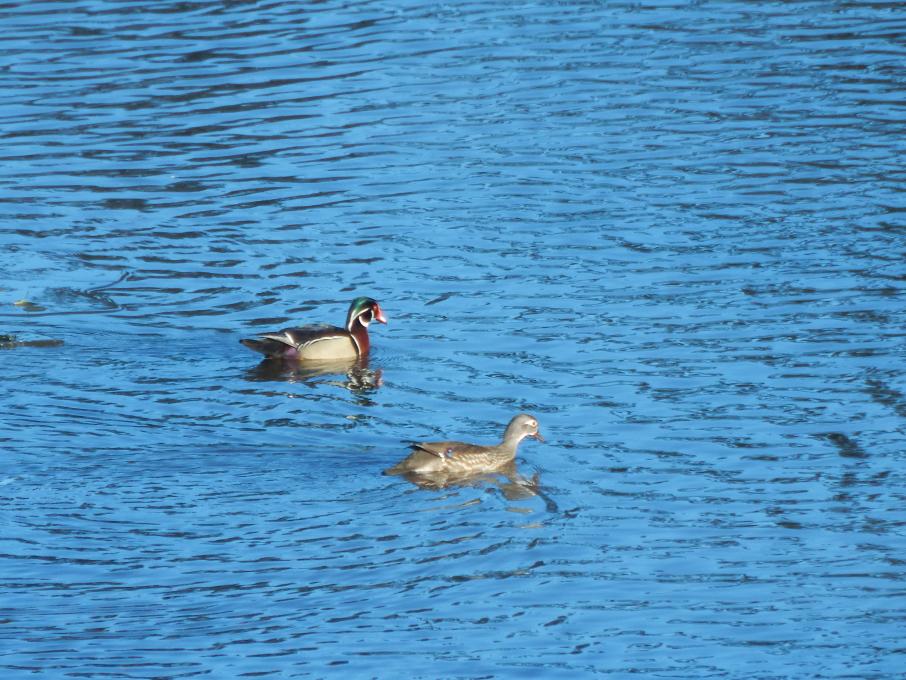The Cornell Lab Bird Academy › Discussion Groups › Joy of Birdwatching › Activities: Helping Birds in Your World
-
Because of this course, I am more likely to watch birds through binoculars, check field guides, and pay attention what I see and hear walking in the woods. I went out with a birding group one Saturday. I would like to do more of that. I am using birding apps and starting to make lists. I will continue to feed the birds, provide water, and bird-friendly plants. Thanks for building this online introductory course! I enrolled when my local Audubon chapter decided not to offer its in-person course due to Covid-19.
-
#2 We feed the birds, provide water for birds, and grow plants in the garden for birds. We could get involved in community awareness projects to decrease light pollution during migration periods as well as promote efforts to fight global warming which harms birds and their habitats.
-
This course has introduced me to new tools like Merlin Bird ID and other resources available to birdwatchers. Apps, electronic lists, weather radar, migration and range maps are all involved in birding today. These tools are sophisticated and technology dependent. Birders rely on more than their field guide and binoculars. Now scientific data is collected and used to track bird populations, migration, and identification. Birders can contribute to this data collection through various projects.
-
Activity 1) Birds matter to me because they are a tiny glimpse of the genius of the Creator. Birds add a colorful burst of joy and energy into those who choose to notice them. While this course hasn't changed my view on the importance of birds, it has revived and reinforced my love for them. Activity 4) Even though I have loved birds since I was very young, I have never had direction in pursuing birding habits or activities. This course has definitely given me ideas for furthering my passion for birds, and I soon hope to embark on the enticing journey that birdwatching offers.
-
I've always loved birds but until my recent retirement had not really studied in depth or done much birdwatching other than on vacations to shore areas and wildlife refuges. Now I've become more serious as I have more time to devote and am taking field courses as well as online offerings like this. It's endlessly fascinating and engaging. I am a city dweller with a small front and backyard. Both are planted with native plants to attract birds, bees, and butterflies. Since doing that I've been delighted by the increase in bees and butterflies in my little yard and also see more birds flying through or stopping by my feeders and bird baths. I was distressed this summer at having to remove them because of the mystery bird illness, but was so happy when the thumbs up came to sanitize and reintroduce them. I've also paid more attention to the types of feeders and feed that attract different birds and have augmented my feeding stations. I am also looking forward to participating in the feeder project. I have also been trying out the Merlin app features on various birding excursions and am learning a lot from them as a novice serious birder.
-
Living through a global pandemic made me look for ways to engage with nature while living in a big city, which I hadn't much before - I always thought I had to travel far and wide to really experience nature. Urban birdwatching has really allowed me to appreciate birds even more and makes me want to care for birds that live in and around cities. I already keep my cat inside, taking her outside only on a leash in order to protect our wildlife, as well as keep her safe! Planting native plants and tending to them in order to encourage and sustain birdlife is something I would like to focus on more. I want to expand my life list (I've just hit 150 official sightings!) and gain more knowledge and understanding of birds. I have enrolled in a bird biology online course and can't wait to make a start!
-
Activity 1: Birds matter so much to me on how every single one of them are unique in their own ways by the sounds they make, the colors and patterns they show, and the behavior they bring out to the world. I never seem to get bored of them since they always give me such a joy and a passion that never seems to get old. This course has gave me more knowledge on the basics of bird watching especially knowing what types of birds I would see in different habitats and locations and this course gave me more of an awareness on how to help and save these birds.
-
I took a bird watching/identifying class at my local community college when I was in my early 20s and that's where my love of birds began. Then life happened-marriage, kids, work, and I stopped actively watching for a long time. Well, here I am in my "golden years" ready to pick up where I left off! This class was an excellent place for me to begin. It inspired me to go on and I have enrolled in Bird Biology/Ornithology. I am excited and eager. Thank you so much, Cornell Lab, for offering these courses.
-
I've been birding off and on for 8 years but just really got serious this year. I'm on a quest to see as many birds as I can for the rest of my life. I'm not much of a photographer but I am starting to study up on how to make quality recordings of birdsongs and calls. I'd like to one day be able to make some really good recordings to go with the extremely amateur photos on my eBird lists.
-
I never paid much attention to birds because I can't see them well enough to identify any. That all changed when a friend handed me a decent pair of binoculars and pointed out a Northern Flicker. I was stunned at the size of the bird and markings that I could actually see! I discovered the Bird Academy and the fabulous Cornell Lab of Ornithology resources and now I can actually identify a handful of birds by sight or song. The courses are guiding my new hobby - my birding journey.
-
The next steps I'd like to take in my birdwatching journey is to improve my photography skills so that I can continue my quest to document the birds I see every day.
-
I am excited to use what I have learned to help ID the birds in my area and keep my life list going.
-
Ive learnt a lot from this course and I plan continue learning with some of the other courses. I’m going to try to document what I see in a nature journal, adding to what I see with information from eBird and other sources.
-
This course has opened my eyes to the beauty, importance and joy birds bring. I am very new to this. My friend introduce me to birding one day and I got very curious about the birds I saw. I plan to continue learning about birds. Thank you for this course.
-
Activity 3: After studying about how birds changing environment and food supply also impacted my world. Last year in Iowa, we had a hurricane called "drecho". A first in history with winds of 112 miles per hour. The aftermath were the downing of thousands of trees, fields leveled, homes and farms destroyed and much more. I live in a townhome in the south part of Ames , Iowa. This area had a lot of old trees, shrubbery, huge lawns and gardens. I didn't notice the real impact of the storm till I took this course. I had noticed some of my favorite birds missing in my patio. The goldfinches are very sparse, as well as, blue jays and woodpeckers. I finally saw my first Ruby-throated Hummingbird this week. I had planted Hostas that have a long tubular flowers that hummingbirds love. The flowers were blooming and the humming birds returned. I am so happy. I plan to incorporate adding a larger variety of bird feed and check on information for bird nests. Maybe in a small way I can help in my part of the world.
-
I have loved birds from a young age. My mother used to teach us about robins, cardinals and blue jays. I am happy to report that there are still many of them where I live. Birds are important to me because they are everywhere. They have influenced and attracted humans for centuries. We eat them (chicken, ducks, etc) and use their feathers and down. The Romans had Eagle’s on their war flags, falcons were used by the kings, the Bald Eagle is Official bird of the USA and a symbol of strength, focus, freedom and stealth. The Canada Goose and the Loon are enduring symbols of Canada, Blue Jays, Cardinals, Eagles and others adorn our professional sports teams. Hundreds of companies worldwide use birds as the name or symbols for their companies. Birds have inspired humans to fly and be free. They have taught us lessons of flight and engineering. Birds are important to the human race and we should be doing everything we can to keep their numbers high and abundant.
-

 I have planted native plants and trees in my backyard to attract birds. Cartago, Costa Rica
I have planted native plants and trees in my backyard to attract birds. Cartago, Costa Rica -
1. I am more aware of the vast variety of birds in my ecosystem and the need to protect our winged neighbors. 2. I am using less plastic. One way by fiat or law, since NYS has banned most consumer use of plastic bags. 3. Since I am in my 70's, I noticed a decline on the once ubiquitous Blue Jay in my area. 4. I am much more aware of the value our avian resource plays in the overall balance our survival on this planet. Climate change is probably the most important factor to survival. Joined a local Audubon club and added bird feeders and bath to my garden.
-
Even though I did this for school, it was very fun and changed my thoughts about birds. Birds play a major role in our world and should not be so overlooked. They need to be helped, not overlooked.
-
Activity 1: Why do birds matter to you? Has this course changed your thoughts about why birds are important? Watching and learning more about birds has helped get me through the pandemic. Being able to look out my window and see the world with new eyes has really contributed to my mental health over the past 14 months. Activity 2: Think about the Seven Simple Actions to Protect Birds. Which are you already doing? Could you practice any of them more extensively, or start trying more of them? What other actions can you think of that could help birds? We have very large sliding deck doors, so I will be investigating ways to ensure that they are bird-friendly. Activity 3: Have you noticed bird populations changing over your lifetime? I don't think so... Activity 4: What next steps do you want to take in your birdwatching journey? Has this course inspired you to try anything new or make any changes in your life? This course (specifically the Panama Fruit Feeder cam) inspired my mother, my sister, and I to take a trip to Canopy Lodge - we're booked to be there for a week this December!
-
Birds give me a sense of joy, whether flitting outside my window, swinging from branch to branch or getting lost in my living room. But I’ve only regarded them collectively as avian class. These lessons introduced me to their diversity, the uniqueness of each species, and engaged me into not just being fascinated by their beauty and songs, but into realizing how important they are to sustaining the earth’s ecosystem. Although I may not have so much time to commit to saving them now, I will take every opportunity I can. For a start, I bought caged birds peddled as toys for kids, and freed them.

-
Hi Emely, your idea is good but the way of doing it is not very good. If you buy caged birds you will be in a way encouraging the illegal traffic of animals, and the ones who do it.
-
-
Birds matter because they are life. All of this creation needs one another. Our planet works in a beautiful yet fragile symbiosis. Harm one and it ripples out from there. Birds are beautiful and birdsong is a lovely way to start the day. I live in southeastern Canada and as the ground awakens from its winter slumber, the skies and trees come alive with the sights and sounds of a diversity of our birds 'coming home'! Birds don't have an easy life. It is about survival and if I can do anything to make their lives easier - safer, I am all for it! We need to care for our world if we want it to last. This year I am making a wildlife friendly garden using native plants and NO pesticides. I have learned so much from the few courses I have taken and look forward to many more. Happy birding everyone and thank you so much Cornell Lab and your Bird Academy.
-
Our cat enjoys watching birds in the bird bath from the comfort and safety of her chair. She’s always been and indoor cat. Additionally, we had been redoing our backyard with a concentration on native plants.
-
I am trying to let others know how many song birds cats kill and encourage them to keep their cats indoors. My cat happily watches the birds at the feeders from many windows. I have always been a little OCD about recycling. LO. I am encouraging others to buy only shade grown coffee. I love to participate in the 2 of the annual bird counting days. I write letters to the editor of a few local papers, pleading hunters to not participate in the duck hunting season. I see the beautiful ducks returning every spring in the river I live on. But the rest of the year the ducks are elusive. Even though I take many canoe camping trips into Algonquin Park's wilderness and travel many lakes I rarely see any ducks. Where have they all gone? I am concerned. Why would anyone want to kill such a small and beautiful creature?
-
Birds are so beautiful and unique. I have learned so much in these courses and in my observations. They all have such unique characteristics and mannerisms. I get my camera all focused to snap a picture of the rarely seen ring neck ducks and then all I get is a picture of ripples as they all dive down in unison. Watching the wood duck is humorous as it looks like the couple is saying, "Lets go this way, no wait, lets go that way, or maybe another way?"

Read More:

 I have planted native plants and trees in my backyard to attract birds. Cartago, Costa Rica
I have planted native plants and trees in my backyard to attract birds. Cartago, Costa Rica 
